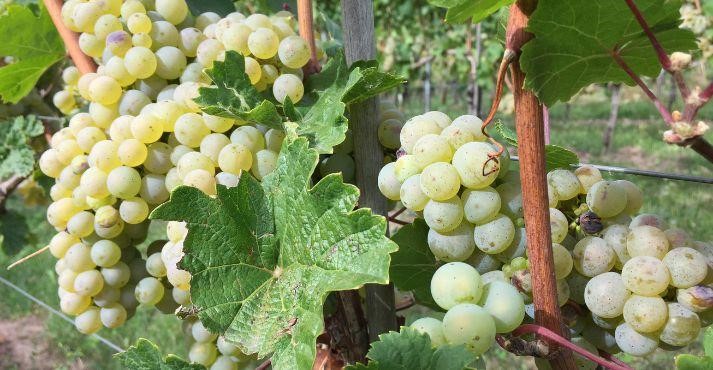Prosecco is a delightful sparkling wine from Italy, renowned for its light, refreshing taste and charming enthusiasm. Originating from the northeastern regions of Italy, primarily Veneto and Friuli Venezia Giulia, Prosecco has become a favorite among wine lovers and party enthusiasts worldwide.
Its affordability and versatility have increased its popularity, especially in Southeast Asia. Recent statistics indicate that the sparkling wine market in this region has experienced growth and will be worth approximately USD 1 billion by 2028. This underscores a rising demand for this Italian bubbly.
In this comprehensive guide, we’ll learn about Prosecco, its origins, its unique production methods, the various types of Prosecco available, and how it compares to other sparkling wines like Champagne.
Unveiling Prosecco’s Origins

The Veneto Region
The Veneto region in northeastern Italy serves as the heart of Prosecco production. This picturesque area is characterized by its lush hillsides, fertile valleys, and ideal climate for grape cultivation.
The history of winemaking in this region dates back to Roman times, with evidence of grape cultivation and viniculture practices that laid the foundation for modern Prosecco production.
The Veneto region’s rich heritage in winemaking is a testament to its enduring connection with the Glera grape, which is central to Prosecco sparkling wine.
Veneto’s landscape offers diverse terroirs, each contributing to Prosecco’s unique flavor profile. The cool climate and well-drained soil create optimal conditions for growing high-quality grapes, ensuring the final product is crisp and refreshing.
The region’s proximity to the Adriatic Sea also shapes the microclimates that influence the grapes’ ripening process.
Glera Grape
Prosecco’s distinctive taste is primarily derived from the Glera grape, which is known for its high acidity, floral aromas, and delicate fruitiness. The Glera grape has a long history, with roots tracing back to the Roman era.
Initially known as Prosecco, the grape’s name was Glera, which was used to distinguish it from the wine and avoid confusion with the Prosecco region.
Learn more about the grape and other natural wine varieties in this best natural wines guide.
Glera grapes are typically grown on hillsides, allowing them to benefit from optimal sunlight and drainage. This cultivation method contributes to the grapes’ vibrant acidity and aromatic qualities, which are essential for creating the light and fruity profile that defines Prosecco.
The Glera grape’s adaptability also allows for different styles of Prosecco, ranging from dry to sweet, depending on the production process and the desired flavor profile, which raises the question of what Prosecco tastes like.
The Charmat Method
One of Prosecco’s defining features is its production method, known as the Charmat method or “tank method.” This process sets Prosecco apart from other sparkling wines like Champagne, which uses the traditional “méthode champenoise.”
The Charmat method involves secondary fermentation in large stainless steel tanks rather than individual bottles. This approach is more efficient and cost-effective, allowing for larger production volumes and making Prosecco more accessible to a broader audience.
The Charmat method begins with the fermentation of Glera grapes to create a base wine. Once the base wine is ready, it is transferred to large stainless steel tanks, where a mixture of sugar and yeast is added.
This triggers a secondary fermentation, producing carbon dioxide that dissolves into the wine, creating the characteristic bubbles of Prosecco.
The Charmat method allows the wine to retain its fresh, fruity flavors, as the contact with lees (spent yeast) is minimal compared to traditional methods.
This results in a lighter, more fruit-forward sparkling wine that appeals to a wide range of palates, and this is why Prosecco sparkling wine is the most loved among the available varieties.
Exploring Different Types of Prosecco
DOC vs. DOCG
In Italy, the quality and origin of wines are governed by a system of designations known as Denominazione di Origine Controllata (DOC) and Denominazione di Origine Controllata e Garantita (DOCG).
Prosecco can be classified under both designations, with DOC representing a broader range of production areas and DOCG indicating stricter regulations and potentially higher quality.
This classification system plays a significant role in the wine market, and our wine market analysis report offers additional insights.
The DOC classification covers a larger geographic area in the Veneto and Friuli Venezia Giulia regions, allowing for greater flexibility in terms of vineyard locations and production methods. DOC Prosecco can be produced in various subregions, each with its own unique characteristics, contributing to a diverse range of flavors and styles.
This flexibility has helped make Prosecco accessible to a broader audience, as it can be produced in more significant quantities.
DOCG Prosecco, on the other hand, is subject to stricter regulations and is typically produced in more specific and controlled areas. The most renowned DOCG region for Prosecco is Conegliano-Valdobbiadene, located between Conegliano and Valdobbiadene in the Veneto region.
This area is known for its steep hillsides and high-quality vineyards, where the best Glera grapes are grown. DOCG Prosecco is often considered a premium product, with a higher price point and a more refined flavor profile amongst the types of Prosecco.
Understanding Sweetness Levels
Prosecco offers a range of sweetness levels, allowing consumers to choose a style that suits their preferences. The sweetness level in Prosecco is determined by the amount of residual sugar left in the wine after fermentation. The following are the most common sweetness levels in Prosecco:
- Brut: This is the driest Prosecco, with less than 12 grams of residual sugar per liter. It’s crisp and refreshing, with a clean finish. It’s an excellent choice for those who prefer a less sweet sparkling wine.
- Extra Dry: Slightly sweeter than Brut, with 12 to 17 grams of residual sugar per liter. Despite the name, Extra Dry has a hint of sweetness that adds depth to the flavor profile. It’s a popular choice for those who enjoy a balanced sparkling wine.
- Dry: This level is misleadingly named, as it’s sweeter than Extra Dry, with 17 to 32 grams of residual sugar per liter. Dry Prosecco has noticeable sweetness, making it ideal for those who enjoy a more dessert-like sparkling wine.
- Demi-Sec: The sweetest Prosecco, with 32 to 50 grams of residual sugar per liter. Demi-Sec Prosecco is often used as a dessert wine, offering a rich and sweet flavor profile.
Each sweetness level brings unique characteristics and can influence the food pairings that work best with Prosecco. Understanding these levels helps consumers choose the right Prosecco for their taste and occasion.
Prosecco Rosé

Prosecco Rosé is a relatively new addition to the family, gaining popularity for its unique color and flavor profile. Introduced in 2020, Prosecco Rosé adds a small percentage of red grape varieties, typically Pinot Noir, to the traditional Glera base.
This addition gives Prosecco Rosé its distinctive pink hue and adds subtle red fruit notes to the flavor profile. It’s more about the flavor profile rather than the Prosecco alcohol percentage.
Prosecco Rosé has quickly become a favorite among those who enjoy sparkling wine with a touch of elegance and a hint of romance. Its refreshing taste and appealing color make it popular for special occasions, summer gatherings, and celebrations.
The production of Prosecco Rosé follows the same Charmat method as traditional Prosecco, ensuring that the bubbles are light and the fruit flavors are well-preserved while maintaining Prosecco’s alcohol content.
Prosecco vs. Champagne: Understanding the Differences
Prosecco and Champagne are two of the most popular sparkling wines in the world, but they have distinct differences that set them apart.
The most significant difference is their region of origin: Champagne is made in the Champagne region of France, while Prosecco is made in Italy’s Veneto and Friuli Venezia Giulia regions.
The production methods also differ. Champagne is produced using the traditional “méthode champenoise,” where secondary fermentation occurs in individual bottles.
This process creates finer bubbles and a more complex flavor profile as the wine spends extended time in contact with lees. Conversely, Prosecco uses the Charmat method, resulting in lighter bubbles and a fruitier taste.
The grapes used in each wine are also different. Champagne typically uses a blend of Chardonnay, Pinot Noir, and Pinot Meunier, while Prosecco is primarily made from the Glera grape. This difference in grape varieties contributes to each wine’s unique characteristics.
Learn more about this topic in the Old World vs. New World Wine guide.
Another notable difference is the price point. Champagne is often more expensive due to its complex production process and prestigious reputation. With its more cost-effective Charmat method, Prosecco tends to be more affordable, making it accessible to a broader audience.
This food and beverage costs guide provides a deeper dive into cost factors in the food and beverage industry.
Pairing Prosecco Wine with Food

Prosecco‘s light and fruity profile makes it a versatile wine for food pairings. Prosecco offers a wide range of pairing possibilities, whether you’re planning a casual brunch, a festive dinner, or a sophisticated party. Here are some suggestions for pairing Prosecco with different types of food:
- Italian Cuisine: Prosecco’s Italian heritage makes it a natural match for classic Italian dishes. It pairs well with pasta dishes with incredibly light and creamy sauces. With its rich texture, Risotto is also an excellent companion for Prosecco.
- Seafood: Prosecco’s crisp acidity and light bubbles make it a perfect match for seafood. It pairs exceptionally healthy with shrimp, scallops, and light fish dishes like sole or cod. The bubbles in Prosecco help cleanse the palate, making it an ideal choice for seafood-based meals.
- Cheese: Soft cheeses like Brie or Camembert complement Prosecco’s light and fruity notes. Hard cheeses like Parmesan or Pecorino can also work well, especially with Brut Prosecco.
- Light Appetizers: Prosecco’s refreshing nature makes it ideal for light appetizers. Bruschetta, caprese salad, and antipasti are excellent options for wine pairing with Prosecco. Its versatility complements various flavors, making it a perfect choice for parties and gatherings.
What is Prosecco? (FAQs)
Is Prosecco champagne?
No, Prosecco is not Champagne. Champagne is made in the Champagne region of France using the traditional “méthode champenoise,” while Prosecco is made in Italy using the Charmat method.
How long does Prosecco last?
An unopened bottle of Prosecco can last up to three years, provided it’s stored in a cool, dark place. Once opened, it is best to consume it within 1-3 days to maintain its optimal taste and bubbles.
Is Prosecco sweet or dry?
Prosecco can be both sweet and dry, depending on its sweetness level. Brut is the driest, while Demi-Sec is the sweetest. The level of residual sugar in the wine determines the sweetness.
Does Prosecco have sugar?
Yes, Prosecco contains sugar, which varies depending on its sweetness level. Brut has the least sugar, while Demi-Sec has the most. Sugar content influences the wine’s sweetness and its pairing versatility.
Conclusion
Prosecco is a sparkling wine from Italy known for its light and refreshing character. Its affordability and versatility have gained popularity in Southeast Asia and worldwide.
Whether you prefer a dry or sweet Prosecco, there’s a type that suits your taste. Its lower alcohol content and fruity flavors make it an excellent choice for casual gatherings and food pairings.
In summary, when we look at Prosecco, we realize its true appeal lies in its variety and accessibility. From DOC to DOCG, Brut to Demi-Sec, and even the newer Prosecco Rosé, there’s a Prosecco for every occasion and palate.
Its distinctive Charmat process production method ensures a light and fruit-forward experience, making it an ideal companion for a wide range of foods and celebrations. So next time you’re looking for a sparkling wine, consider Prosecco, a delightful and budget-friendly option.





























